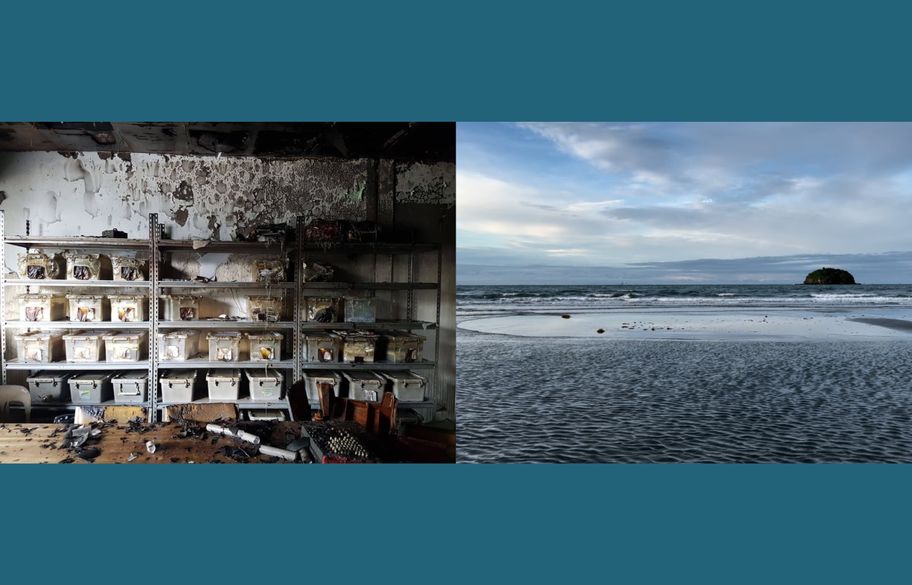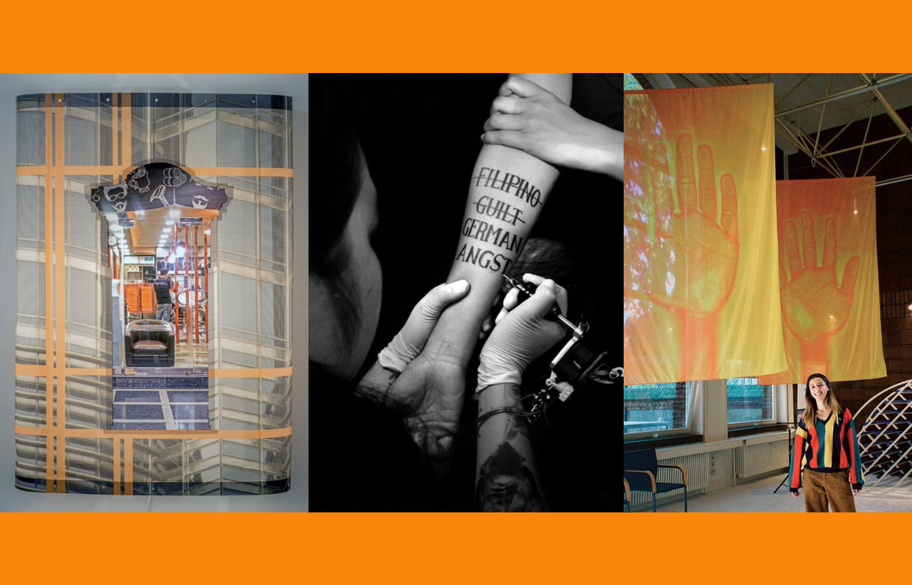Philippines, Visual Arts, 2024, in Berlin
Green
Papaya

In the Philippines, Green Papaya exemplifies the type of civic space, or contact zone, that works with and around particular communities of kindred practitioners. It creates hybrid, inter-media programs animated by impulses markedly different from those emanating from, broadly speaking, the market or museums. Not totally isolated from institutions or typical economic systems, it insists on a distinction that is by turns polemical, strategic, and political. This is the context from which Green Papaya draws its strength and conveys its energy to a hopefully generous but also agonistic public sphere.
Green Papaya began as an artist-initiated platform. As such, it was designed as an alternative and independent enterprise, activated by timely and agile programs around exhibitions, publications, archives, conversations, workshops, and performances. The arrangements through which its procedures were concretized varied, as Green Papaya interacted with heterogeneous audiences in specific situations. In light of these diverse engagements in the course of time, the definitions of the “alternative” and the “independent” would shift and inevitably be constantly reconsidered on the ground. The idealizations of autonomy would thus give way to practical modes of sustaining initiatives and, if possible, threaten the thresholds of expectations within a cultural ecology of highly mediated sympathies and interests.
Moreover, Green Papaya is invested in archiving its work not only to register its history, but also to contribute to a more robust discourse of Philippine art and culture; it forces a dialectic within the annotation of Philippine contemporary art. The daunting challenge for this nimble constellation is self-reflexivity and the ability to elicit from the said public sphere reciprocal contestation, demands of accountability, and propositions for internal transformation and persistent learning.
In many ways, Green Papaya introduces a decisively skeptical attitude towards norms and in doing so applies pressure to some nodes in the artistic network to expand, innovate, calibrate, and recast assumptions about what it means to conceive of and nurture the vitality of inventive projects and organizations across myriad iterations. It foregrounds an ethical technique as well as a logistical model for instilling dynamism in the art world. Such an art world considerably dilates as Green Papaya moves between spaces across the Philippine archipelago. For instance, its efforts in Roxas City in the Visayas, the central islands in the Philippines, casts a more extensive net to involve agents in the field of scholarship, tourism, education, rural architecture, indigenous communities, and so on. This matrix of mutating economies, structures, and poetics crystallizes a flexible infrastructure that aspires to resist the temptations of a bureaucracy, confront the violence of power, and harness the joy of collective action.
For charting a less trammeled path, convening coteries not commonly present in institutions, and refusing to follow tried and tested formulae set by habits and conveniences, Green Papaya forms part of an interconnected constituency that ensures the survival and resilience of a lively creative world. Finally, it renders a vaster terrain of practice and intellectual landscape as it provides opportunities for experimentation, critique, and general speculation about art itself and the society in which it is entangled intricately. Green Papaya initiates consequences out of a critical relationship with perceived hegemonies and from within incites its own circumstances.
Text: Patrick Flores
Thanks to a cooperation with the Matschinksy-Denninghoff Foundation under the umbrella of Berlinische Galerie, the DAAD Artists-in-Berlin Program is awarding a collective grant to the Filipino collective Green Papaya for the first time in 2024. Founded in 2000, Green Papaya Art Projects is the largest and oldest multidisciplinary platform in the Philippines. The independent initiative supports and promotes actions and projects that deal with the production, mediation and presentation of contemporary practices in various artistic and academic disciplines.







